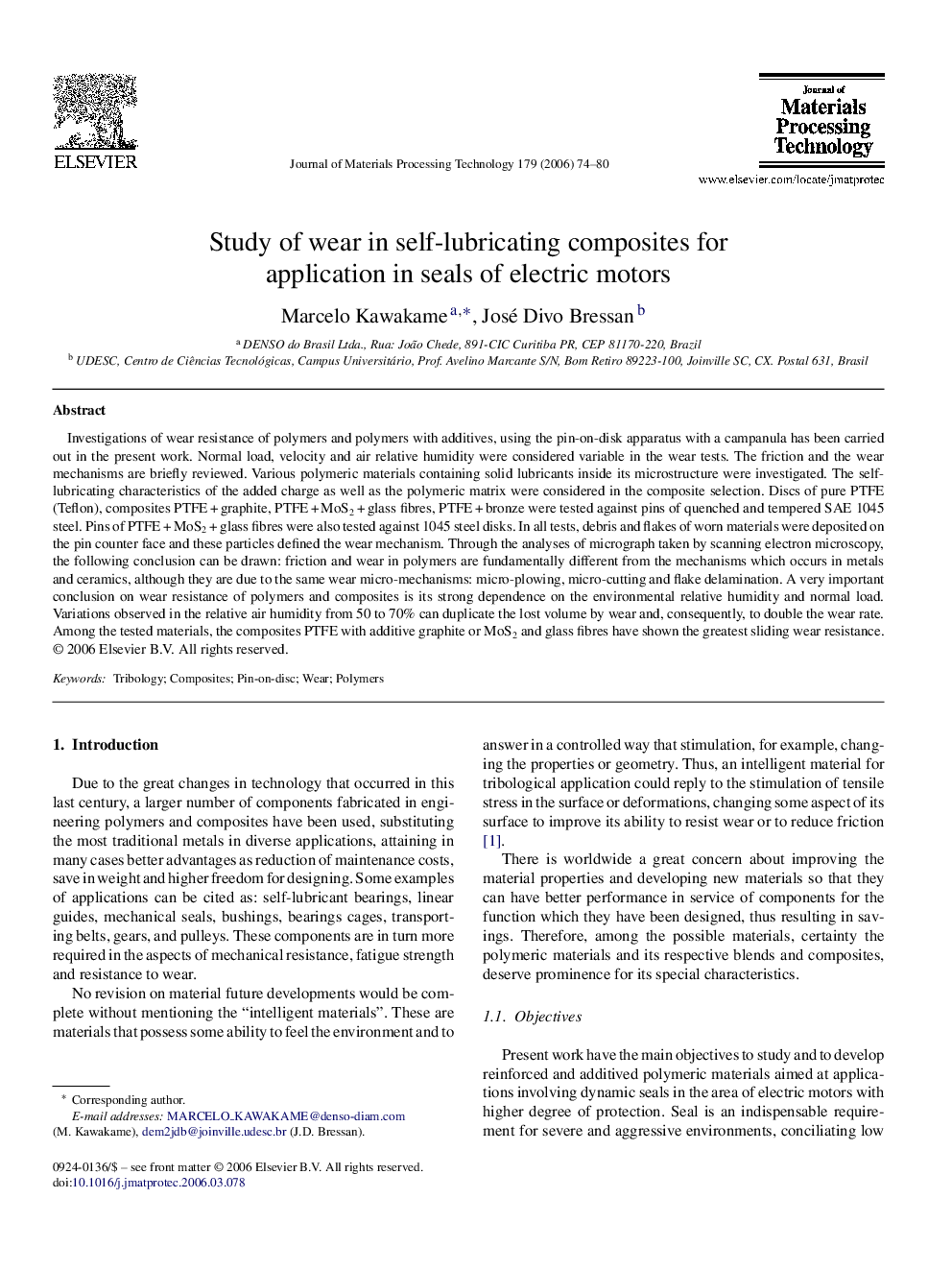| Article ID | Journal | Published Year | Pages | File Type |
|---|---|---|---|---|
| 791976 | Journal of Materials Processing Technology | 2006 | 7 Pages |
Investigations of wear resistance of polymers and polymers with additives, using the pin-on-disk apparatus with a campanula has been carried out in the present work. Normal load, velocity and air relative humidity were considered variable in the wear tests. The friction and the wear mechanisms are briefly reviewed. Various polymeric materials containing solid lubricants inside its microstructure were investigated. The self-lubricating characteristics of the added charge as well as the polymeric matrix were considered in the composite selection. Discs of pure PTFE (Teflon), composites PTFE + graphite, PTFE + MoS2 + glass fibres, PTFE + bronze were tested against pins of quenched and tempered SAE 1045 steel. Pins of PTFE + MoS2 + glass fibres were also tested against 1045 steel disks. In all tests, debris and flakes of worn materials were deposited on the pin counter face and these particles defined the wear mechanism. Through the analyses of micrograph taken by scanning electron microscopy, the following conclusion can be drawn: friction and wear in polymers are fundamentally different from the mechanisms which occurs in metals and ceramics, although they are due to the same wear micro-mechanisms: micro-plowing, micro-cutting and flake delamination. A very important conclusion on wear resistance of polymers and composites is its strong dependence on the environmental relative humidity and normal load. Variations observed in the relative air humidity from 50 to 70% can duplicate the lost volume by wear and, consequently, to double the wear rate. Among the tested materials, the composites PTFE with additive graphite or MoS2 and glass fibres have shown the greatest sliding wear resistance.
